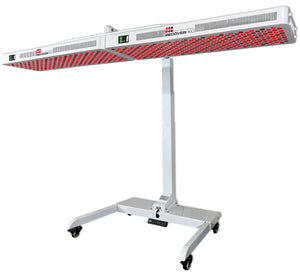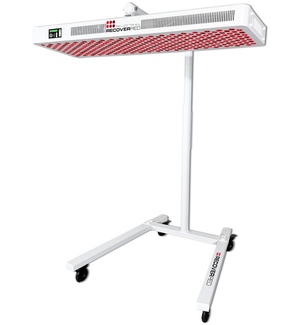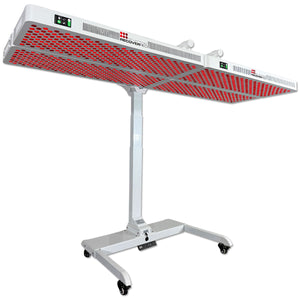Have you heard the term “sunshine guilt?” Even if the answer is “no,” it’s likely you’ve at least experienced this phenomenon at some point in your life. After all, sunshine guilt is becoming a widely recognized phenomenon, gaining attention from major publications like The New York Post and becoming a hot topic among podcasters and commentators. But what exactly is sun guilt? More importantly, how can we manage or even reverse its effects?
What is Sunshine Guilt?

It's like your day is pre-ruined by the mere thought of missing out on the sunlight, which naturally makes us feel calmer, happier, and more focused due to the sunlight's influence on our serotonin levels. For those "trapped" inside, feelings of jealousy and guilt become all too common, whether it's because of indoor tasks like cleaning or simply choosing to stay in.
Among Gen Z, sunshine guilt is closely linked to two other phenomena. The first is “bed rotting,” or spending an excessive amount of time in bed, usually without sleeping. The other is the preposterously named “hurkle durkle” or “hurkle durkling,” which means to lie in bed or lounge about when one should be up and about. In this case, rather than be “stuck” inside, a person is purposely staying inside to avoid the world at large.
What Are the Benefits of Sunshine Exposure?

Whether you’re working, bed rotting, or hurkle durkeling, it’s important to remember that sunlight is crucial for our health. For starters, it sets our circadian rhythm, impacting our sleep cycle. In fact, exposure to early morning sunlight can set a biological timer, helping us feel sleepy at the right time at night. And that’s just the start:
- Vitamin D Synthesis - Sunlight is a natural source of vitamin D, which is essential for bone health, calcium absorption, and immune system function. When exposed to UVB rays from the sun, your skin produces vitamin D.
- Improved Mood - Sunlight exposure increases the brain's release of a hormone called serotonin, which is associated with boosting mood and helping a person feel calm and focused. Low levels of sunlight have been linked to a form of depression called seasonal affective disorder (SAD).
- Better Sleep - Exposure to natural light during the day can help regulate your sleep pattern. It does this by maintaining a healthy level of melatonin, a hormone that regulates sleep.
- Supports Immune Function - Vitamin D, synthesized from sunlight exposure, plays a crucial role in the immune system and can help ward off infections and disease.
- Helps Prevent Certain Diseases - Adequate levels of vitamin D, which can be increased through sunlight exposure, have been linked to lower risks of certain diseases, including multiple sclerosis, heart disease, and some forms of cancer.
- Skin Conditions - Controlled sunlight exposure is sometimes used as a treatment for certain skin conditions, such as psoriasis, eczema, jaundice, and acne, under medical supervision.
- Improved Eye Health - Natural light is important for the development and maintenance of good vision. However, excessive exposure to UV rays can be harmful, so it's important to balance exposure.
Despite these benefits, it's important to balance exposure to avoid the risks associated with too much UV radiation, including skin cancer, premature aging, and eye damage. That’s why experts always recommend using sunscreen, wearing protective clothing, and limiting direct sun exposure during peak UV hours to mitigate these risks.
Red Light Therapy as a Sunlight Alternative
If you’re at all interested in the medical benefits of light, you’ve no doubt heard of Red Light Therapy, or RLT. RLT and sunlight each play unique roles in our health, offering distinct benefits. And though RLT can't replace sunlight, especially when it comes to vitamin D production, it provides its own set of advantages, including rejuvenated skin, muscle and bone health improvement, immune system support, and improved mood.
What is Red Light Therapy?

Red light therapy uses specific light spectrums to stimulate cellular structure, akin to how sunlight encourages plant growth. Non-invasive and pain-free, RLT can be easily done at home with the right device. Its foundational principle revolves around energizing mitochondria, the cell's powerhouse, thereby enhancing overall cellular function.
As a result of this stimulation, it promotes a wide range of benefits, such as boosting collagen production for healthier skin, aiding in new cell growth, and rejuvenating the body.
The Differences Between Red Light and Sunlight
Again, it’s important to remember that Red light therapy and sunlight serve different functions and have distinct benefits for health. That’s why RLT cannot fully replace sunlight, especially regarding the production of vitamin D.
Here's a comparison to clarify their differences and applications:
Sunlight
- Broad Spectrum - Sunlight provides a broad spectrum of light, including ultraviolet (UV), visible, and infrared light. This broad spectrum is essential for various biological processes, including the synthesis of vitamin D, which is crucial for bone health, immune function, and more.
- Vitamin D Production - UVB rays from sunlight are necessary for the body to produce vitamin D. This process cannot be replicated by red light therapy.
- Circadian Rhythm Regulation - Exposure to natural sunlight, especially in the morning, helps regulate the body's circadian rhythm, improving sleep quality and mood.
- Mood Enhancement - Sunlight exposure increases serotonin levels, which can improve mood and help prevent conditions like seasonal affective disorder (SAD).
Red Light Therapy
- Targeted Wavelengths - RLT uses specific wavelengths of red and near-infrared light. It is believed to work by acting on mitochondria to increase energy production at a cellular level, which can promote healing and reduce inflammation.
- Therapeutic Applications - RLT has been studied for various applications, including skin health (improving skin complexion, reducing signs of aging), wound healing, pain reduction, and inflammation reduction.
- No Vitamin D Production - RLT does not provide UV light and, therefore, does not stimulate vitamin D production in the skin.
- Useful for Specific Conditions - RLT is used for targeted therapy sessions, usually in a controlled environment, for specific health conditions or goals.
Proven Benefits of Red Light Therapy
As you can see, while RLT offers targeted benefits like improved skin health, muscle recovery, and mental well-being, it doesn't replicate sunlight's broad spectrum of benefits. However, RLT has its own place in therapeutic applications, from skin complexion improvement to inflammation reduction. Best of all, RLT does not include a risk for UV damage. In this way, these therapies complement each other, serving different health needs and cannot be directly substituted for one another.
Here are just some of the benefits of regular RLT use:
- Skin Vitality and Youthfulness - RLT enhances collagen production, which is essential for keeping the skin firm and minimizing the visibility of wrinkles and fine lines. A boost in collagen and improved blood flow lead to stronger, more youthful skin, aiding in the fight against aging.
- Muscle Healing and Performance Enhancement - RLT mitigates muscle exhaustion and discomfort following strenuous exercise by decreasing inflammation and boosting circulation. This quickens recovery, enabling more regular and effective workout routines.
- Alleviation of Joint Discomfort and Swelling – RLT’s anti-inflammatory properties help lessen pain and enhance movement, improving life quality for individuals with chronic joint issues.
- Mental Well-being Improvement - There's growing evidence that RLT could be effective in treating conditions like depression and anxiety. By influencing brain function and boosting mitochondrial efficiency, RLT could provide a drug-free method to better mood and reduce mental health symptoms.
- Accelerated Healing and Tissue Regeneration - RLT speeds up the body's healing mechanisms, reducing the recovery period from injuries and operations. This is especially useful for healing skin lesions and soft tissue damage, where increased cellular growth results in quicker, more effective recovery.
- Cardiovascular Health Support - RLT promotes blood circulation and lowers inflammation, providing secondary benefits to the heart and blood vessels. This might include lowered blood pressure and enhanced cardiac function.
- Bone Density Improvement - Early research shows RLT could positively affect bone density, potentially aiding those at risk for osteoporosis. This offers a non-intrusive way to enhance bone strength.
The Verdict: Red Light Therapy Can Help Relieve “Sunshine Guilt”

While different in a lot of ways, RLT provides targeted therapeutic benefits without the risks associated with UV exposure. Understanding the distinct roles each plays in our health can help alleviate sunshine guilt by recognizing that indoor light therapy sessions can also contribute to our overall well-being, complementing the times we are able to enjoy the sun safely.




